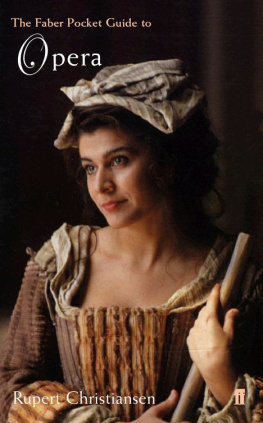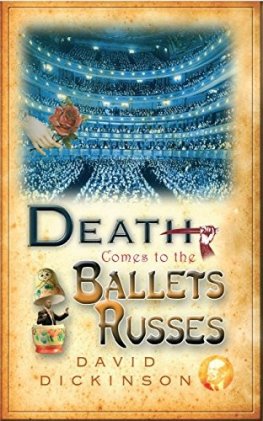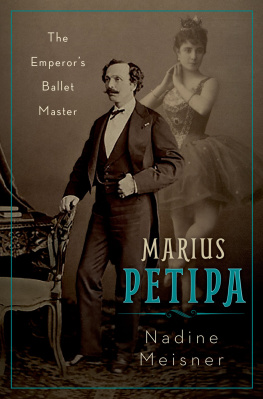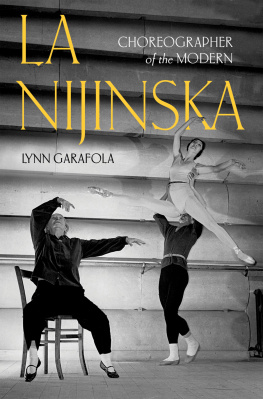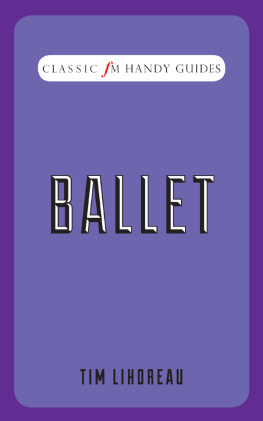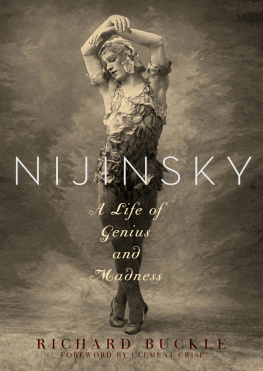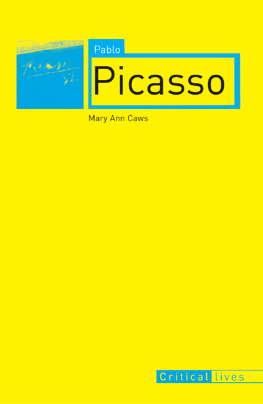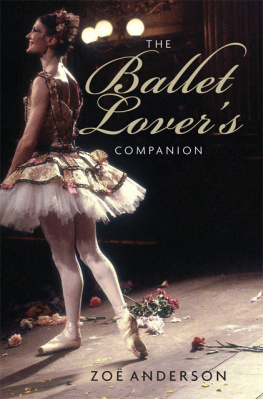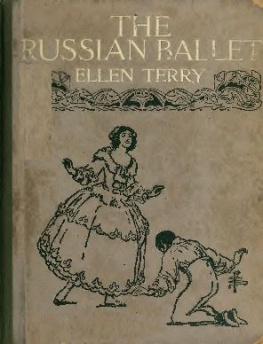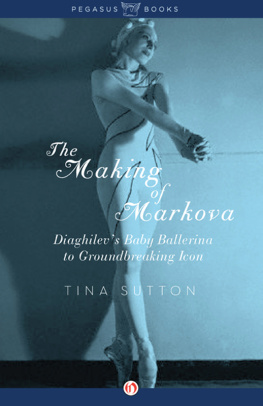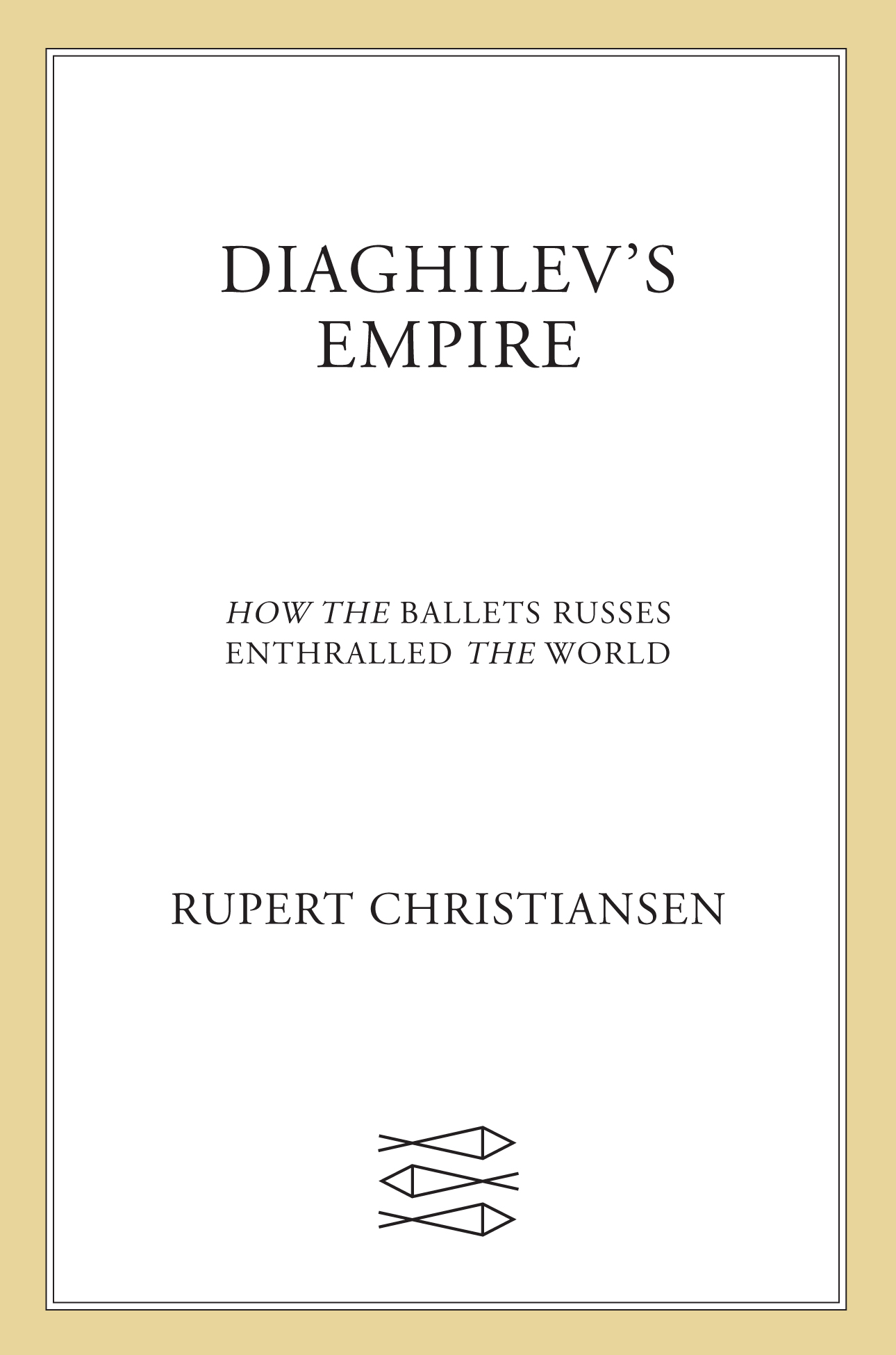Contents
Guide
List of Figures
Pagebreaks of the print version

The author and publisher have provided this e-book to you for your personal use only. You may not make this e-book publicly available in any way. Copyright infringement is against the law. If you believe the copy of this e-book you are reading infringes on the authors copyright, please notify the publisher at: us.macmillanusa.com/piracy.
For Ellis Woodman
This book has been written by someone in the grip of an addiction.
I confess to being an incurable balletomane a morbid affliction of which the chief symptom is the daily expense of an unconscionable amount of time watching, thinking or dreaming about classical dance and dancers. I dont merely like, appreciate or enjoy ballet; I deeply and secretly need it, as irrationally infatuated with my home team (the Royal Ballet, to which I have been wedded for over half a century) as others are to Spurs or the Red Sox. I study form, follow the relevant social media, review the annual accounts. Oh dear.
Sports fanatics will recognise that this relationship is not steady: as standards slip or personnel changes, I have often despaired; there have been bitter quarrels, even periods of estrangement and disenchantment, but I am always drawn inexorably back. This isnt a matter of choice; theres nothing I can do about it. I cant renounce or transfer allegiance this is family, this is in my blood. My life, my sense of myself, would not be complete without it. And people like me will crop up repeatedly throughout what follows.
Why do I feel like this? I can only say, naively perhaps, that to me ballet communicates a compelling idea of beauty, a form of dramatic poetry that can be expressive beyond words, and an endlessly fascinating struggle with the possibilities and limitations of the human body. A dream of perfection is within its reach; a frisson of erotic attraction enters the mix too. Read on to discover more.
Although I very much hope that this book will please all those who suffer in a similar way, you, my brothers and sisters, are not its primary target. Nor have I set out to thrill scholars and experts with a substantially original contribution to academic research. I aim simply to chart the course of a long story, making connections that can explain the allure of ballet to those uninfected with my mania but curious to know what the fuss is all about. More specifically, I want to trace the historical moment when, thanks to a unique enterprise and the individual who drove it, ballet became a crucial piece in the jigsaw of Western culture.
Conceived in 1909 by its mastermind, the impresario Sergei Pavlovich Diaghilev, as a Russian export designed to appeal to Western tastes, the Ballets Russes came to an official end after many vicissitudes with Diaghilevs abrupt death in 1929. But the achievements of its heroic prime had established a paradigm that would continue to define the terms and set the standards for the next generation a period during which ballet for most people meant the Russian ballet. How that phenomenon grew and flourished is the theme of chapters 26; how it was absorbed and arguably declined will be the theme of chapters 79.

Robert Helpmann (centre, in black) terrorising Moira Shearer in The Red Shoes
How many movies can claim to have cast such a transformative spell on peoples imaginations as The Red Shoes? Written, produced and directed by Michael Powell and Emeric Pressburger, drawing on a tale by Hans Christian Andersen and set in the world of the Russian ballet, it regularly features in roll-calls of the cinemas greatest achievements as admired for its audacious technical originality as it is loved for its gorgeous visual compositions, its mysteriously resonant story and its memorable central performances from Anton Walbrook as the heartless impresario Boris Lermontov and Moira Shearer as the conflicted young ballerina Victoria Page.
Released in 1948 when Europe was mired in the grip of post-war austerity, The Red Shoes had a visceral impact. It aroused tremendous popular interest in ballet, wrote Arlene Croce. The whole surge was extraordinary and has never been repeated.The Red Shoes provided an exhilarating shot of something that everyone had been missing outside the cinema: not that dull grey or even dear old English green, but colour elevated into gloriously excessive Technicolor, enhancing not only the scarlet hue of the eponymous ballet slippers, but the dazzling white marble paving and azure skies of the Monte Carlo scenes too.
The films title symbolises a compulsion that is both creative and destructive. The red shoes are never tired, the red shoes dance on, Lermontov hauntingly tells Victoria Page. He craves demoniacal control over her; she is torn between her desire to dance at the highest level and her desire for a domestic life with the composer Julian Craster. She cant have both, as Lermontov insists: The dancer who relies on the comfort of human love will never be a great dancer. Art demands soul as well as body, but Victoria is driven to sacrifice herself in the face of that challenge: Take off the red shoes are her last words as she lies in Crasters arms after taking her suicidal leap the only release from her dilemma is not to dance and not to live. That is the almost paradoxical message of Victorias fate. The real reason why The Red Shoes was such a success, wrote Michael Powell in a much-quoted passage from his autobiography, was that we had all been told for ten years to go out and die for freedom and democracy, for this and for that, and now that the war was over, The Red Shoes told us to go and die for art.
The films influence has been widespread. It crested the high tide of ballets popularity and indeed lifted it to a higher level, mythologising the phenomenon of the Russian ballet and the mystique surrounding the man who dominated it Sergei Pavlovich Diaghilev, the chief model for the figure of Boris Lermontov and onlie begetter of the company that went by the name of the Ballets Russes. (It is worth noting that neither Powell and Pressburger ever saw a performance by the company, and what they show relates more closely to the Russian ballet as it had developed in the 1930s, after Diaghilevs death.)
As well as Hans Christian Andersens parable, the narrative has a prime source in what had recently become known about Diaghilevs turbulent relationship with his star Vaslav Nijinsky, translated in the screenplay into Victoria Pages attempt to escape Lermontovs grip. The film omits any overt sexual element and builds on tropes that dont falsify so much as caricature. The commissioning of avant-garde music and designs, the rows over copyright and who invented what, the small-scale British troupe pluckily competing with the grander Russian operation, as well as the figures of the enchanting but capricious Russian ballerina, the explosive ballet master drilling his slaves at the barre, the hovering ballet mother, the aristocratic lady patron, and the pompous bohemian balletomanes with their cloaks and beards all these clichs need unpacking.
Moira Shearer herself was positively contemptuous of the films picture of the ballet world: Everything was glamourised and fanciful, she complained, and there wasnt a single moment which showed the real work of dancers and choreographers. Although the use of professional ballet dancers in the cast provided another level of authenticity, the glow of glamour has ultimately proved stronger than the drudge of documentary. The image of Shearers Victoria Page, with her flame hair, baby face and shocking-pink Jacques Fath ballgown, has retained the romance for thousands of little girls as they bash out their


